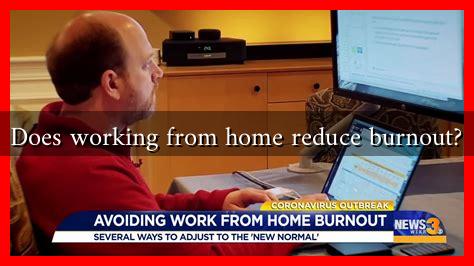-
Table of Contents
Does Working from Home Reduce Burnout?
In recent years, the concept of remote work has gained significant traction, especially following the global pandemic that forced many organizations to adopt work-from-home policies. As employees navigate the challenges of balancing work and personal life, a pressing question arises: does working from home reduce burnout? This article explores the relationship between remote work and employee burnout, examining the benefits and challenges of this arrangement.
The Rise of Remote Work
According to a report by FlexJobs, remote work has increased by 159% between 2005 and 2017, and this trend accelerated dramatically during the COVID-19 pandemic. As companies adapted to new realities, many employees found themselves working from home for the first time. While some thrived in this environment, others struggled with the blurred lines between work and personal life.
Understanding Burnout
Burnout is a state of emotional, physical, and mental exhaustion caused by prolonged and excessive stress. The World Health Organization (WHO) classifies burnout as an occupational phenomenon, characterized by:
- Feelings of energy depletion or exhaustion
- Increased mental distance from one’s job
- Reduced professional efficacy
Burnout can lead to serious health issues, including anxiety, depression, and cardiovascular problems. Understanding its causes is crucial for developing effective strategies to mitigate it.
Benefits of Working from Home
Remote work offers several advantages that can contribute to reducing burnout:
- Flexibility: Employees can create their own schedules, allowing them to balance work and personal responsibilities more effectively.
- Reduced Commute: Eliminating the daily commute saves time and reduces stress, contributing to a better work-life balance.
- Personalized Work Environment: Employees can tailor their workspace to suit their preferences, which can enhance comfort and productivity.
- Increased Autonomy: Remote work often comes with greater independence, allowing employees to manage their tasks without micromanagement.
These factors can lead to increased job satisfaction and a lower likelihood of burnout. A study by Owl Labs found that remote workers reported higher levels of happiness and productivity compared to their in-office counterparts.
Challenges of Remote Work
Despite its benefits, working from home is not without challenges that can contribute to burnout:
- Isolation: Remote workers may experience feelings of loneliness and disconnection from colleagues, which can lead to emotional exhaustion.
- Work-Life Balance: The lack of clear boundaries between work and home life can result in longer working hours and difficulty disconnecting from work.
- Overcommunication: The pressure to stay connected can lead to constant notifications and meetings, increasing stress levels.
According to a survey by Buffer, 20% of remote workers cited loneliness as their biggest struggle, highlighting the importance of addressing social needs in a remote work environment.
Strategies to Mitigate Burnout in Remote Work
To maximize the benefits of remote work while minimizing burnout, organizations and employees can implement several strategies:
- Set Clear Boundaries: Establish specific work hours and communicate them to colleagues to create a clear separation between work and personal time.
- Encourage Regular Breaks: Taking short breaks throughout the day can help recharge energy levels and improve focus.
- Foster Social Connections: Encourage virtual team-building activities and regular check-ins to combat feelings of isolation.
- Promote Mental Health Resources: Provide access to mental health support and resources to help employees manage stress effectively.
Conclusion
Working from home has the potential to reduce burnout by offering flexibility, autonomy, and a personalized work environment. However, it also presents challenges that can exacerbate feelings of isolation and stress. By implementing effective strategies to address these challenges, both organizations and employees can create a healthier remote work culture. Ultimately, the key to reducing burnout lies in finding a balance that works for each individual, ensuring that the benefits of remote work are fully realized while mitigating its potential downsides.
For more insights on managing remote work and preventing burnout, consider exploring resources from organizations like the World Health Organization and FlexJobs.

